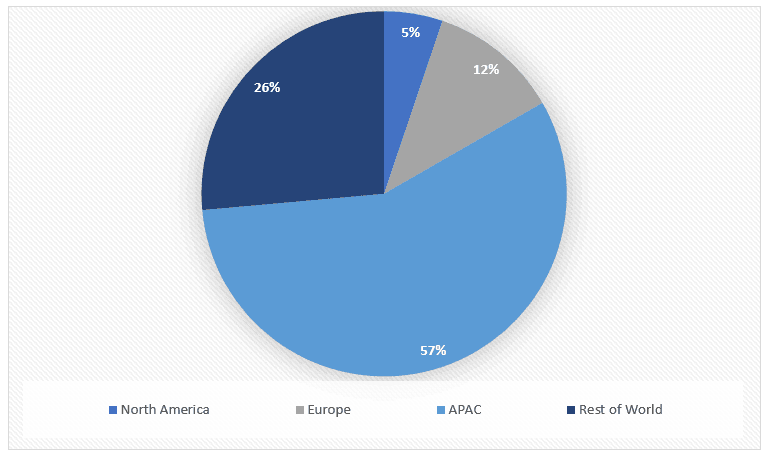- Home
- About Us
- Industry
- Services
- Reading
- Contact Us
HOSPITAL FURNITURE MARKET SEEN SOARING 8.5% GROWTH TO REACH USD 16.1 BILLION BY 2030, PROJECTS UNIVDATOS
Author: Vikas Kumar
June 24, 2024
Key Highlights of the Report:
- Growing prevalence of chronic ailments: The rising incidence of chronic diseases such as cancer due to the adaptation of a bad lifestyle is driving the rate of hospital admissions.
- Advancements by Key Players: Continuous advancements and improvements in drug design are contributing to the growth of the hospital furniture market. These advancements enable key competitors to provide better patient care.
- Rising hospital admissions: With the increasing number of chronic diseases, there has been a surge in the number of hospital admissions which is driving the market of hospital furniture.
- Hospital beds gaining traction in the market: Among all segments, hospital beds have emerged as a major investment zone in the hospital furniture market.
According to a new report by UnivDatos, the Hospital Furniture Market is expected to reach USD 16.1 Billion in 2030 by growing at a CAGR of 8.5%. Hospital furniture consists of a variety of specialized tools and items specifically designed for medical environments. This category encompasses hospital beds, examination tables, surgical tables, patient chairs, bedside tables, medical carts, and specialized storage units. These items are custom-made to support patient care, treatment, and medical procedures conducted in hospitals and clinics. The hospital furniture market is growing rapidly due to the increasing prevalence of chronic diseases like cancer. For example, in 2020, GLOBOCAN conducted a study on the incidence and prevalence of cancer in the world and estimated 308,102 new cancer cases diagnosed in the U.S. in 2020. This market is also being boosted due to multiple factors like the rise in the geriatric population, increased expenditure in healthcare, and advancements in healthcare technologies. For instance, the World Health Organization (WHO) reported in October 2022 that between 2015 to 2050, the segment of the world’s population over 60 years will nearly double from 12% to 22%, which will propel the hospital furniture market at a steady rate.
For More Detailed Analysis in PDF Format, Visit- https://univdatos.com/reports/hospital-furniture-market?popup=report-enquiry
The report suggests that Rising Hospital Admissions is one of the major factors driving the growth of the hospital furniture market during the forthcoming years. Rising hospital admissions significantly drive the demand for hospital furniture. Several factors contribute to this trend, including the aging population. The aging population often experiences age-related health issues that require medical attention, leading to increased hospital admissions. Moreover, the prevalence of chronic diseases, such as diabetes, cardiovascular ailments, and respiratory disorders, contributes to higher hospitalization rates. Patients with chronic conditions often require extended stays and specialized furniture for comfort and care. Emergency admissions due to accidents, trauma, or sudden illnesses also play a significant role. These cases often require immediate medical attention, leading to increased occupancy of hospital beds, stretchers, and other specialized furniture to support emergency care. Hospital admissions are not limited to acute care; they also include long-term stays for rehabilitation and post-surgery recovery. Furniture like adjustable beds, chairs with ergonomic designs, and mobility aids become essential in such cases. Hospitals are increasingly recognizing the importance of patient comfort and its impact on recovery. Overall, the increasing rate of hospital admissions, driven by various health-related factors and evolving healthcare needs, acts as a substantial driving force behind the continual demand for hospital furniture. Manufacturers continually innovate to meet the diverse needs of healthcare facilities, ensuring that the furniture provided supports efficient care delivery and patient well-being.

Fig1: Total No. of Hospital Beds (in billions), Global-2020
Hospital Beds Gaining Traction in the Hospital Furniture Market:
Hospital beds remain a key segment, with trends focusing on ergonomics, patient comfort, and advanced features for better care. Manufacturers are focusing on innovation to meet varying needs, including electric beds, ICU beds, and specialized designs for different medical conditions. Advancements in hospital beds have been focused on improving patient comfort, safety, and healthcare delivery. These beds now often come with features like adjustable height, remote-controlled positioning, pressure redistribution surfaces to prevent bedsores, integrated scales, electronic medical record integration, fall prevention mechanisms, and even connectivity for monitoring vital signs. Some also have features for easier patient mobilization and transfer, enhancing both patient care and healthcare provider workflow. Additionally, smart beds using sensors and AI are being developed to predict patient needs and alert healthcare providers to potential issues.
Conclusion
The global hospital furniture market is a rapidly growing field, with advancements in diagnostic methods leading to improved outcomes for patients. It is expected to continue to grow in the coming years. Overall, the global hospital furniture market represents a significant opportunity for pharmaceutical companies and professionals in the field of clinical research. With continued research and development, even more effective diagnostics will likely become available in the future, leading to improved outcomes for patients with chronic disorders.
Key Offerings of the Report
Market Size, Trends, & Forecast by Revenue | 2023−2030
Market Dynamics – Leading Trends, Growth Drivers, Restraints, and Investment Opportunities
Market Segmentation – A detailed analysis by Product Type, Material Type, End-user, and Region
Competitive Landscape – Top Key Vendors and Other Prominent Vendors
Get a Callback
